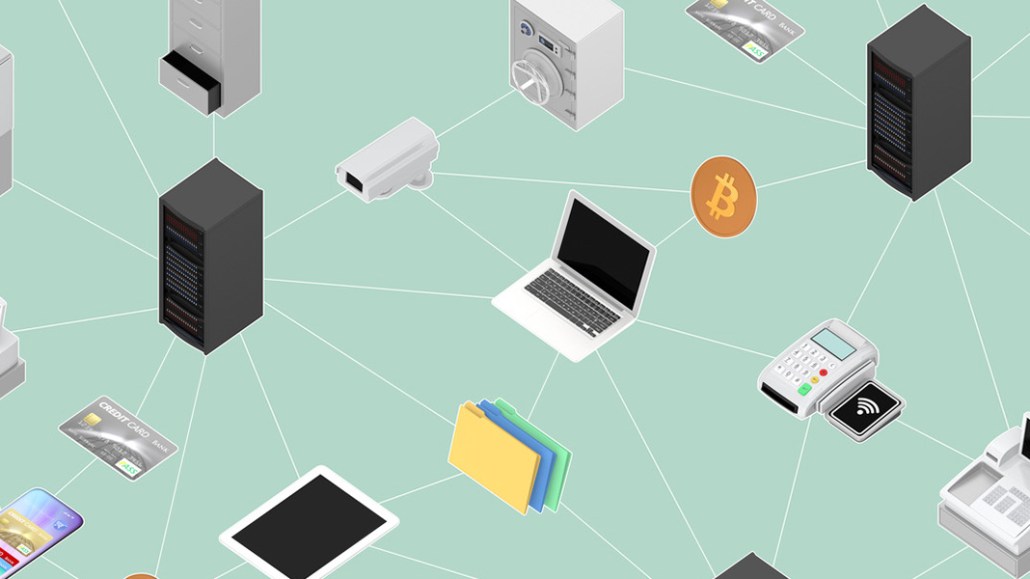Save 50% on a 3-month Digiday+ membership. Ends Dec 5.
Dennis is trying to use blockchain to improve programmatic transparency

Magazine publisher Dennis wants to improve the transparency of digital ad trading, and it believes blockchain technology could hold the answer.
The publisher is leading a project to create an SSP prototype using blockchain, best known in the financial space as the technology underpinning bitcoin. The goal: Root out any potential fee-skimming within digital ad transactions so publishers and buyers can see exactly where the money is going.
The scheme also has the backing of five other publishers including the Guardian, Financial Times, CNN International, Reuters and Mansueto — all members of the programmatic ad alliance Pangaea.
Dennis applied, on behalf of all Pangaea publishers, for funding from Google’s Digital News Initiative. This week it was granted €160,000 ($182,000) by Google DNI to create the SSP prototype.
Blockchain has been hailed as a useful way to improve transparency and lessen fraud in digital marketing. Now, publishers want to use it to help fight their own cause.
“A transparent publisher-specified SSP will move the game forward by allowing premium brands to ensure they’re reaching relevant audiences in brand-safe environments. This funding will help us and the Pangaea collective deliver on our shared goal of providing a layer of verification around trading our premium audiences within the open market,” said Paul Hood, head of digital at Dennis Publishing.
Publishers have wrestled with the harsh reality that for every £1 ($1.29) advertisers spend programmatically, only a small proportion gets to the publisher — in some cases just 30 pence — and data merchants somewhere within the digital ad transaction process gobble up the rest. The Guardian is locked in a legal battle with its former vendor Rubicon Project over allegedly being charged hidden fees.
Ad position: web_incontent_pos1
Receiving funding to use blockchain to create an SSP that’s transparent to all parties involved should give publishers the proper visibility of the bid train and crush any black holes. The theory is, the end product would provide publishers with an itemized bill showing exactly what the advertiser put in and the journey to what the publisher ends up with.
Once the product is built, the plan is for all Pangaea partners to adopt it as their de facto SSP.
Ad operations team members from each of the publishers will form a working group to determine some of the finer details of the project objectives and scope. Once they’re ready to create the product, they’ll likely look for vendor partners to help, though they’ll also use in-house product development teams.
The aim is to get some live tests up and running, using the platform to trade real display-ad campaigns, with a dashboard that both buy and sell sides can access to view the results.
The fact that one-half of the Facebook-Google duopoly, which collectively eats up 20 percent of global media ad spend, is funding this kind of project may seem somewhat ironic. But Google has granted funds for projects pitched by news publishers across Europe via its DNI for the past two years. Last year, Google DNI pumped €24 million ($27 million) into 124 of these projects across 25 countries in Europe. This year, Google has offered €22 million ($25 million) in total for 107 projects across 27 countries. Typically, it categorizes funds into three buckets: tier one, which is for small projects requiring up to €50,000 ($57,000); tier two, which is for larger projects needing up to €300,000 ($342,000); and ventures needing up to €1 million ($1.1 million).
More in Media

What publishers are wishing for this holiday season: End AI scraping and determine AI-powered audience value
Publishers want a fair, structured, regulated AI environment and they also want to define what the next decade of audience metrics looks like.

Digiday+ Research Subscription Index 2025: Subscription strategies from Bloomberg, The New York Times, Vox and others
Digiday’s third annual Subscription Index examines and measures publishers’ subscription strategies to identify common approaches and key tactics among Bloomberg, The New York Times, Vox and others.

From lawsuits to lobbying: How publishers are fighting AI
We may be closing out 2025, but publishers aren’t retreating from the battle of AI search — some are escalating it, and they expect the fight to stretch deep into 2026.
Ad position: web_bfu




